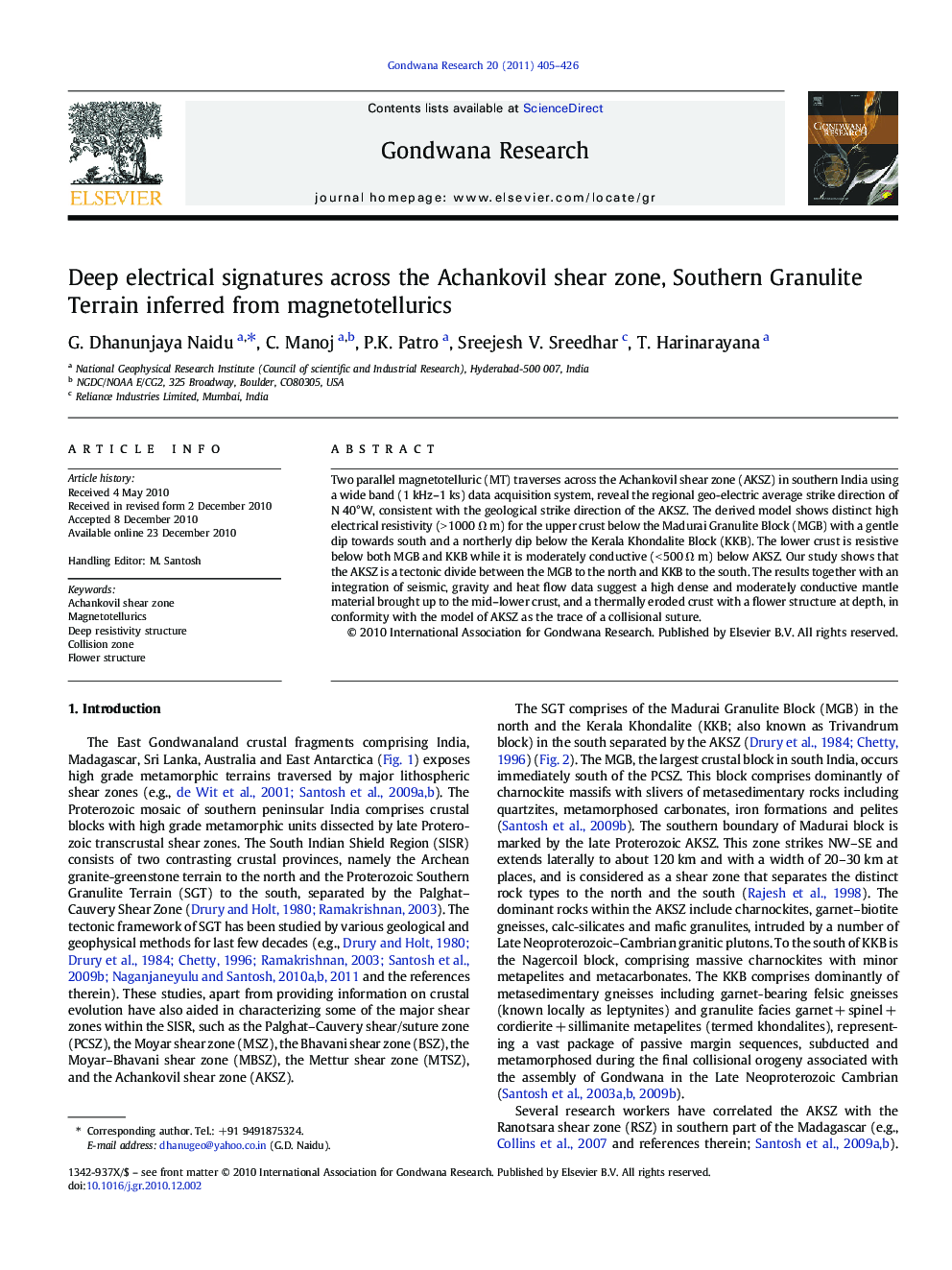| Article ID | Journal | Published Year | Pages | File Type |
|---|---|---|---|---|
| 4727703 | Gondwana Research | 2011 | 22 Pages |
Two parallel magnetotelluric (MT) traverses across the Achankovil shear zone (AKSZ) in southern India using a wide band (1 kHz–1 ks) data acquisition system, reveal the regional geo-electric average strike direction of N 40°W, consistent with the geological strike direction of the AKSZ. The derived model shows distinct high electrical resistivity (> 1000 Ω m) for the upper crust below the Madurai Granulite Block (MGB) with a gentle dip towards south and a northerly dip below the Kerala Khondalite Block (KKB). The lower crust is resistive below both MGB and KKB while it is moderately conductive (< 500 Ω m) below AKSZ. Our study shows that the AKSZ is a tectonic divide between the MGB to the north and KKB to the south. The results together with an integration of seismic, gravity and heat flow data suggest a high dense and moderately conductive mantle material brought up to the mid–lower crust, and a thermally eroded crust with a flower structure at depth, in conformity with the model of AKSZ as the trace of a collisional suture.
Graphical AbstractFigure optionsDownload full-size imageDownload as PowerPoint slideResearch Highlights► MT model reveals the thermal evolution of the crust across the Achankovil shear zone. ► Moderately conductive deep crust beneath the AKSZ, associated with high velocity, high density and high heat flow. ► A dome like feature beneath the Madurai Granulite Block. ► The study reveals a crustal flower structure and confirms the model of AKSZ as a collisional suture.
